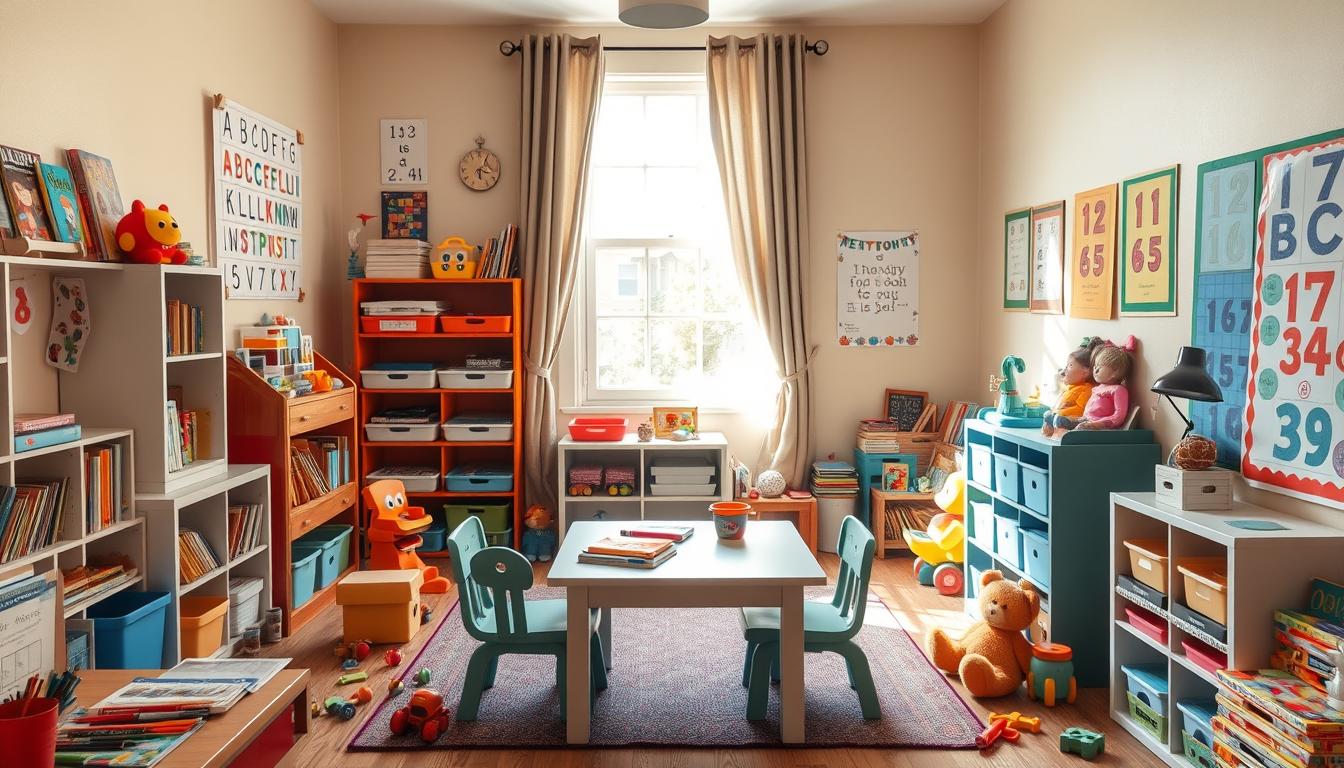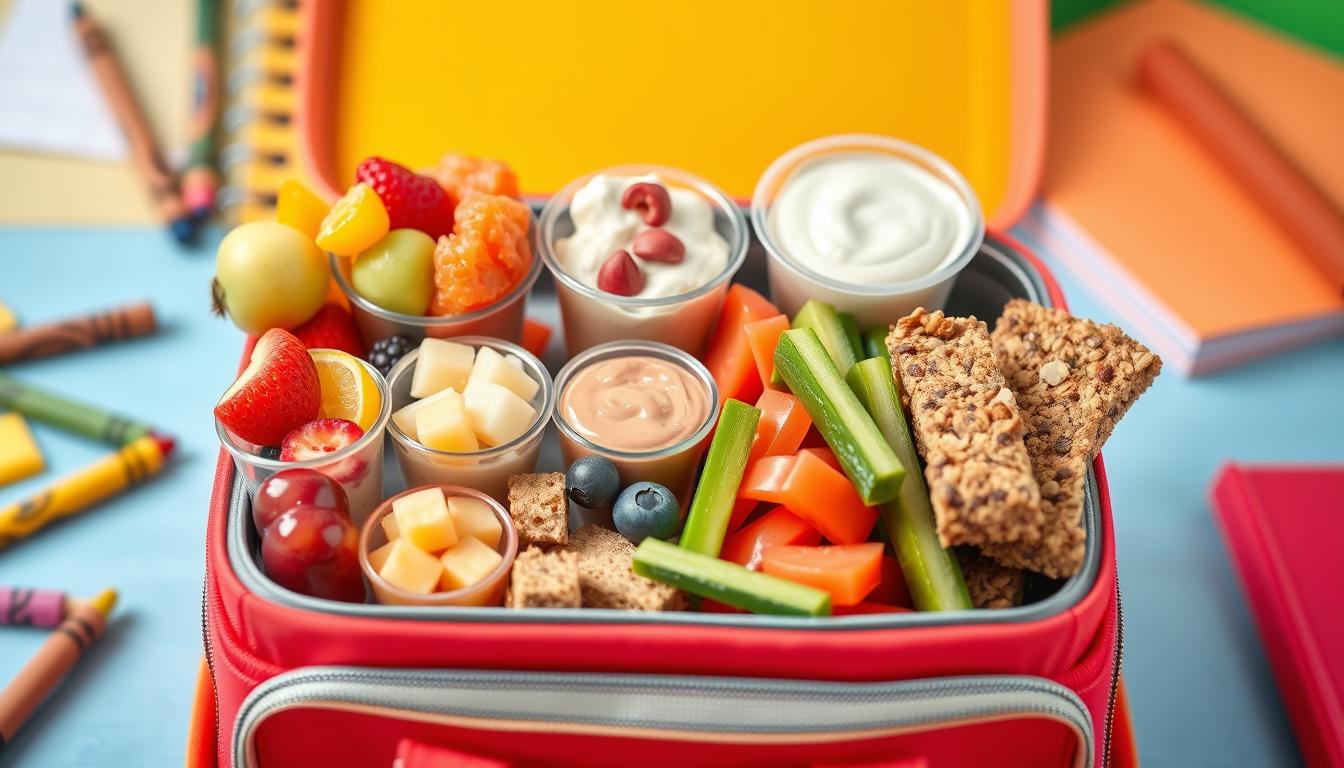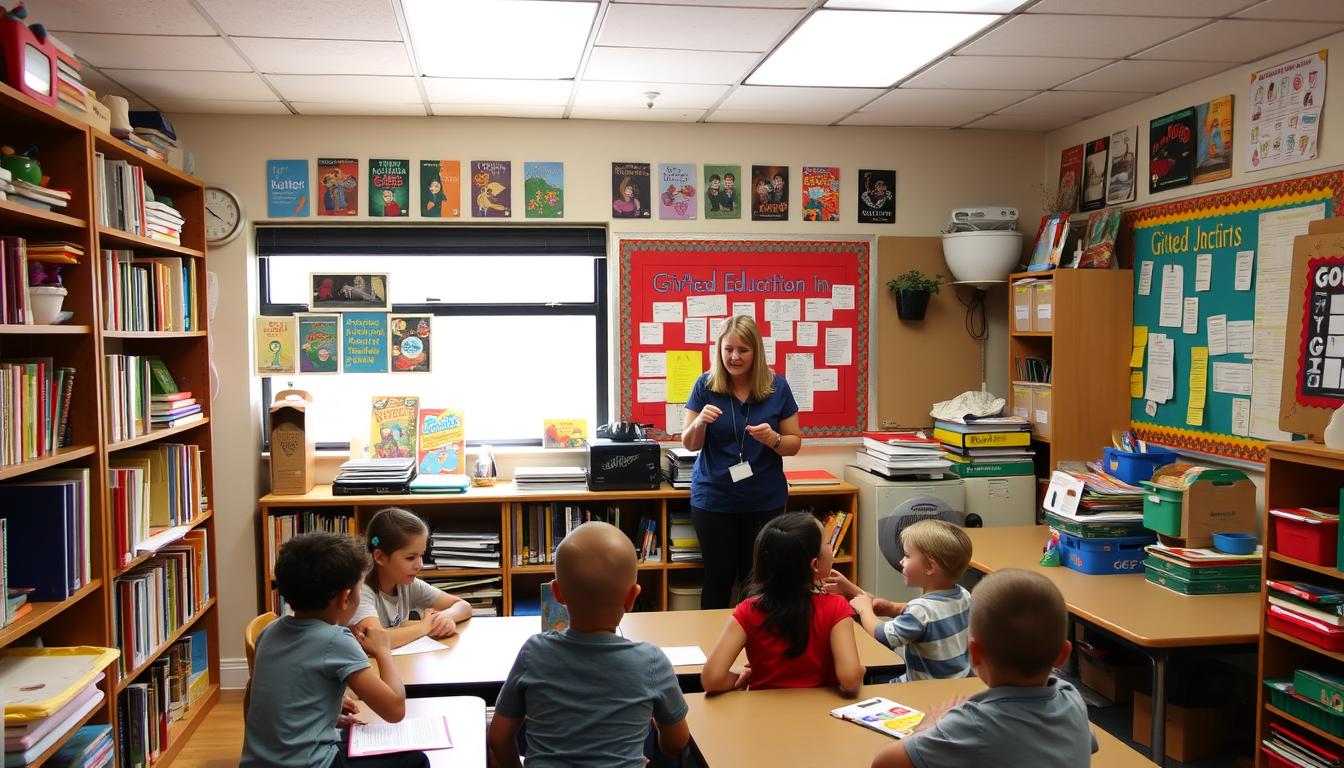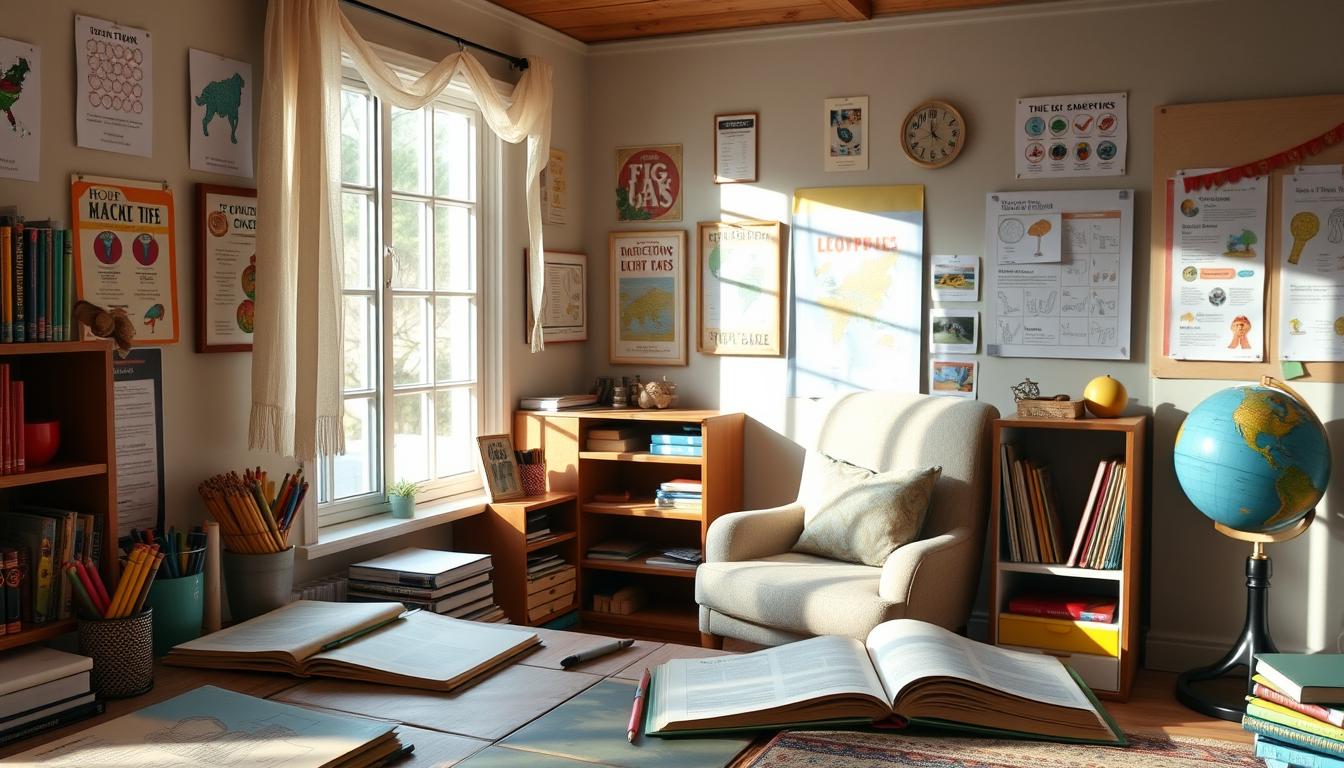Starting early childhood education at home can be thrilling and a bit scary for parents. This guide helps you find the best preschool homeschool curriculum. It shows you how to create a fun learning space for your kids.
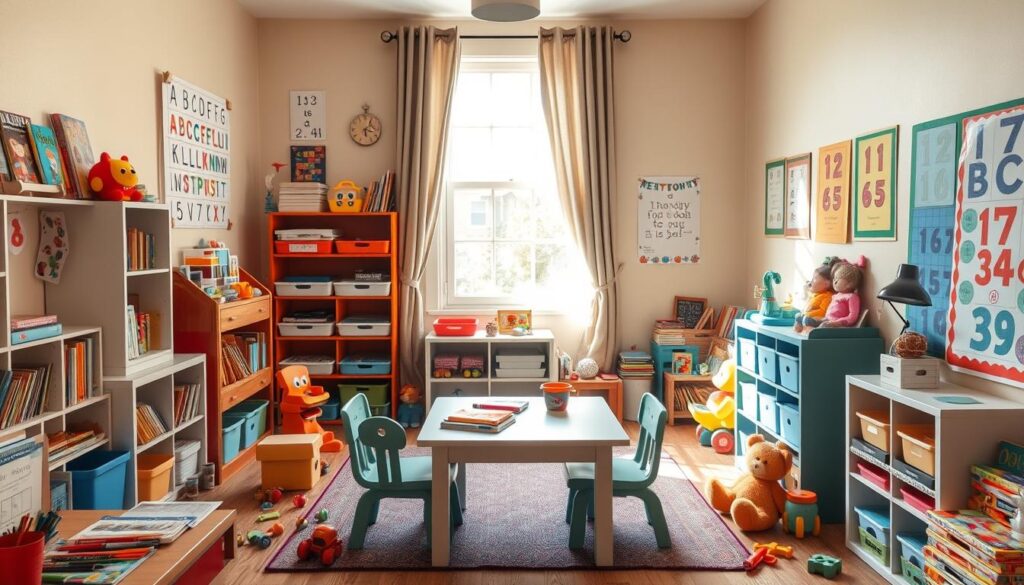
This article covers the basics of early learning at home. It also talks about teaching methods and gives practical advice. You’ll learn how to make a preschool homeschool curriculum that fits your child’s needs and growth.
Thinking about a Montessori, play-based, or traditional approach? This guide has the info and resources you need. It helps you make choices that make learning fun and rewarding for your child.
Understanding the Fundamentals of Early Childhood Education at Home
Preschool homeschooling lets parents teach their kids at home. It’s a chance to create a learning space that’s both fun and supportive. This way, kids can grow to love learning and exploring.
Benefits of Home-Based Early Learning
Learning at home in preschool means kids get a lot of personal attention. They can learn at their own speed, doing lots of hands-on activities. This makes them more engaged and helps them remember things better.
Developmental Milestones in Early Years
Preschoolers grow fast in many ways. They get better physically, think clearer, and learn to socialise and feel emotions. Knowing these milestones helps parents plan learning activities that match their child’s needs.
Creating an Effective Learning Environment
It’s important to make a good learning space at home. This might mean setting up special areas for learning, using educational toys, and making a welcoming atmosphere. A child-focused approach helps kids feel curious and excited about learning.
“The first five years have so much to do with how the next 80 turn out.”
– Bill Gates
Essential Components of Preschool Homeschool Curriculum
Creating a preschool homeschool curriculum needs careful thought. It’s vital to include key elements to ensure your child grows well-rounded. Here are the main parts to focus on:
- Language and Literacy: Help your child develop reading, writing, and speaking skills. Use interactive books, phonics, and vocabulary games.
- Mathematics and Numeracy: Teach math basics like counting, shapes, and simple addition. Use fun games and hands-on tools.
- Science and Exploration: Encourage curiosity with simple science experiments. Let them observe and learn about the world.
- Creative Arts: Add art, music, and play to boost creativity and fine motor skills.
- Social-Emotional Development: Focus on empathy, social skills, problem-solving, and emotional control.
A good preschool homeschool curriculum should have educational toys, preschool lesson plans, and engaging resources.
| Curriculum Component | Example Activities |
|---|---|
| Language and Literacy | Reading aloud Alphabet recognition Rhyming games Storytelling |
| Mathematics and Numeracy | Counting and number sense Sorting and classifying Measuring and comparing Patterning |
| Science and Exploration | Nature walks Sensory experiments Observing changes in the environment Learning about living things |
| Creative Arts | Drawing and painting Singing and dancing Dramatic play Crafting and construction |
| Social-Emotional Development | Cooperative play Emotional identification and regulation Problem-solving and conflict resolution Cultivating empathy and kindness |
By adding these key parts to your preschool homeschool curriculum, you’ll give your child a rich learning experience. It will help them grow intellectually, physically, and emotionally.
Popular Homeschooling Methods and Approaches
Parents have many choices for preschool homeschooling. Let’s look at some popular methods for early learning.
Montessori Method for Home Education
The Montessori method focuses on hands-on learning. It uses a prepared environment. Parents can set up a learning space with materials for exploration and skill development.
Play-Based Learning Techniques
Play is key for young children. Play-based learning uses fun, imaginative activities. It helps with overall development through games and exploration.
Traditional Academic Approach
Some parents like a structured, teacher-led curriculum. This method builds a strong base in reading, writing, and math. It uses direct instruction and workbooks.
Finding the right homeschooling method is important. It depends on your child’s learning style and your goals. Mixing different approaches can help you find what works best.
“The goal of early childhood education should be to activate the child’s own natural desire to learn.” – Maria Montessori
Choosing Age-Appropriate Educational Materials and Resources
Choosing the right homeschooling resources and educational toys is key for a fun preschool curriculum. Parents need to think about what their young learners need and like. This helps in creating a great learning environment at home.
For preschool lesson plans, a mix of activities is best. Good books that help with reading, like picture books, are important. Also, toys that encourage kids to explore and solve problems, like blocks and puzzles, are great for learning.
Exploring Digital Homeschooling Resources
Today, there are lots of online resources for preschool homeschooling. Websites, apps, and interactive platforms offer fun and educational content. Parents should check these out to make sure they fit their child’s learning needs.
| Homeschooling Resources | Educational Toys | Preschool Lesson Plans |
|---|---|---|
| Online educational websites Educational apps and digital platforms Curated resource lists and databases | Building blocks and construction sets Puzzles and shape sorters Art supplies and creative materials | Storybooks and picture books Hands-on learning activities Sensory exploration materials |
By carefully picking homeschooling resources, educational toys, and lesson plans, parents can make a fun and learning-rich environment. This supports their child’s growth and development.
“The key to successful early learning is to provide children with a variety of engaging and developmentally appropriate materials that spark their curiosity and encourage exploration.”
Integrating Play-Based Learning with Academic Goals
Teaching young children to love learning is a mix of fun and structure. In preschool homeschooling, it’s key to blend play and learning goals. This way, parents can spark their child’s curiosity and build a strong base for school success.
Balancing Structured and Unstructured Activities
A good preschool homeschool plan has both structured lessons and free play. Structured activities, like reading or math, teach important skills. Free play lets kids explore and be creative. Switching between these keeps learning fun and effective.
Using Educational Toys Effectively
Adding educational toys to homeschooling boosts play-based learning. Toys like blocks and puzzles mix fun with learning. They help kids learn important skills and keep them excited about learning.
Incorporating Movement in Learning
Young kids do best when they move and learn at the same time. Adding physical activities to homeschooling uses educational toys and movement. Dancing, yoga, or obstacle courses help kids learn and stay active.
The secret to great preschool homeschooling is play-based learning. It’s about finding the right balance, using educational toys, and keeping kids active. This way, parents create a supportive and engaging learning space for their child’s future.
Assessment and Progress Tracking in Home Preschool
It’s important to keep track of a child’s growth and learning when homeschooling. In power homeschool, parents can adjust how they check progress to fit their child’s needs and learning style.
Using informal methods is key. This includes watching your child, noting milestones, and keeping a portfolio of their work. By observing your child’s interests and challenges, you can tailor your teaching to keep them engaged and learning well.
There are also online tools to help track your child’s progress. These tools offer checklists and assessments that match early learning standards. They help you see how your child is doing in areas like language, reading, math, and social skills.
“Regular assessment and progress tracking are the keys to creating a truly personalised learning experience for your preschool homeschooler.”
By mixing informal and digital methods, you can really understand your child’s learning path. This helps you make the right choices for their homeschool program, making sure it meets their unique needs.
The aim of assessment in preschool homeschooling is to celebrate your child’s growth, not compare them to others. With a thoughtful approach to tracking progress, your power homeschool curriculum can prepare your child for success in the future.
Creating a Daily Schedule for Your Preschool Homeschool Curriculum
Creating a daily routine is key for a successful preschool homeschool. A structured yet flexible schedule meets your child’s educational needs. It also creates a nurturing learning space. We’ll look at sample daily routines and how to adapt to your child’s changing needs and interests.
Sample Daily Routines
A balanced preschool homeschool day includes structured activities, free play, and rest. Here’s a sample schedule to get you started:
- Wake-up and morning routine (7:00 am – 8:00 am)
- Breakfast and family time (8:00 am – 9:00 am)
- Structured learning activities (9:00 am – 10:30 am)
- Outdoor play or physical activity (10:30 am – 11:30 am)
- Snack and quiet time (11:30 am – 12:30 pm)
- Lunchtime and cleanup (12:30 pm – 1:30 pm)
- Nap or rest period (1:30 pm – 3:00 pm)
- Free play and exploration (3:00 pm – 4:30 pm)
- Educational games or read-aloud (4:30 pm – 5:30 pm)
- Dinner and family time (5:30 pm – 7:00 pm)
- Evening routine and bedtime (7:00 pm – 8:00 pm)
Flexibility and Adaptation Strategies
While a structured schedule is vital, flexibility is equally important. Every child is different, and their needs and interests evolve. Adjust your daily routine to match your child’s growth, energy, and learning style.
Success in preschool homeschool comes from balancing structure and flexibility. By creating a nurturing and engaging environment, you support your child’s early education. This fosters a lifelong love of learning.
Socialisation and Community Engagement Opportunities
Starting your preschool homeschool journey means thinking about your child’s social growth. Homeschooling doesn’t mean they can’t meet friends or join in community activities.
With preschool homeschool, you can find many ways for your child to socialise. They can join local homeschooling resources groups or take part in community events. This ensures they have a balanced social life.
- Enrol your child in co-op classes or playgroups where they can interact with other homeschooled children.
- Organize regular playdates with other homeschooling families in your area.
- Encourage your child to participate in extracurricular activities, such as sports, arts, or music classes, where they can make new friends.
- Volunteer as a family in community service projects, fostering a sense of civic responsibility and belonging.
A good preschool homeschool program should focus on your child’s social and emotional growth. By taking advantage of socialisation chances, your child will learn important life skills. They’ll also make friends and enjoy their homeschooling experience.
“Homeschooling doesn’t mean your child has to miss out on the joys of interacting with their peers and engaging with the broader community.”
Incorporating Technology in Preschool Homeschool Curriculum
Technology is now a big part of early learning. It includes apps, online learning, and interactive tools. These tools make learning fun and engaging for young children.
Using technology in homeschooling lets kids access lots of digital resources. Sites like abeka academy, monarch homeschool, and primavera online school offer interactive lessons and games. They match the learning styles and interests of preschoolers.
- Interactive Lessons: Preschoolers love hands-on learning. Apps and online platforms offer fun, interactive content. They keep young learners engaged and learning.
- Virtual Field Trips: Technology lets kids explore the world. They can go on virtual tours and see live animal habitats. It sparks their curiosity and broadens their horizons.
- Collaborative Learning: Online tools help kids connect with others. They can join group activities and learn social skills. It’s great for homeschooling.
It’s important to set limits on screen time. A mix of digital and hands-on activities is best. This way, technology supports learning, not replaces it.
| Digital Resource | Description | Recommended Age |
|---|---|---|
| abeka academy | Comprehensive online curriculum for preschool through high school | 3-5 years |
| monarch homeschool | Flexible, digital-based homeschool program with interactive lessons | 4-6 years |
| primavera online school | Virtual school offering live classes and self-paced online lessons | 3-5 years |
By using technology wisely, parents can enrich their child’s learning. It makes homeschooling engaging and well-rounded.
Addressing Common Challenges in Preschool Homeschooling
Homeschooling preschoolers can be rewarding but also challenging for parents. They face issues like keeping motivation up and dealing with distractions. But, with the right strategies, these challenges can be overcome, making homeschooling a success.
Maintaining Motivation
Keeping young learners engaged can be tough. Parents can use fun, hands-on activities that match their child’s interests. Regular breaks, rewards, and involving the child in planning can also keep them excited about learning.
Balancing Responsibilities
Managing homeschooling with family and work life can be hard. A consistent daily routine, delegating tasks, and getting support from others can help. Remember, taking care of yourself is key to avoiding burnout.
Dealing with Distractions
Home can be full of distractions for homeschooling. A dedicated learning space, less external noise, and breaks can help kids stay focused.
| Challenge | Solutions |
|---|---|
| Maintaining Motivation | Incorporate fun, hands-on activities Take regular breaks Offer rewards and incentives Involve child in curriculum planning |
| Balancing Responsibilities | Establish a consistent daily routine Delegate household tasks Seek support from your support network Prioritise self-care and take breaks |
| Dealing with Distractions | Designate a dedicated learning space Minimise external stimuli Incorporate movement breaks |
By tackling these challenges with a positive attitude and flexibility, parents can make homeschooling a rewarding experience for their children. With the right approach and support, the preschool homeschool journey can be a positive and memorable time for the whole family.
TO WATCH VIDEO CLICK HERE
Conclusion
As we conclude this guide on preschool homeschool curriculum, remember that every child is different. They have their own way of learning and interests. Homeschooling lets you tailor the curriculum to fit your child’s needs.
We’ve looked at the basics of early childhood education and what a preschool homeschool curriculum should include. We’ve also discussed various teaching methods, like Montessori and play-based learning. These options help you create a learning space that excites and motivates your child.
Starting your journey in home-based preschool education is exciting. Make sure to mix structured lessons with free play. Use educational tools and technology wisely. Most importantly, cherish the time you spend with your child as you explore this new chapter together.
FAQ
What are the key benefits of home-based early learning for preschoolers?
Preschool homeschooling lets you tailor learning to your child’s style. It creates a caring space and flexible times. This means more personal learning and fun activities.
How do I create an effective learning environment for my preschool homeschool?
Start with a special learning area and the right toys and tools. Add movement and hands-on fun. Keep a routine but stay flexible.
What are the essential components of a well-rounded preschool homeschool curriculum?
A good curriculum covers reading, numbers, language, and creativity. It includes art, music, and play. This helps your child grow in many ways.
What are some popular homeschooling methods suitable for preschoolers?
Methods like Montessori, play-based, and traditional work well for young learners. Pick what fits your child’s learning style best.
How do I find age-appropriate educational materials and resources for my preschool homeschool?
Look for quality books, toys, and digital tools that engage and support learning. Talk to homeschooling groups and experts for the best picks.
How can I effectively integrate play-based learning into my preschool homeschool curriculum?
Blend structured lessons with free play and movement. Use toys that spark curiosity and creativity. This makes learning fun and engaging.
What are some methods for assessing and tracking progress in my preschool homeschool?
Use observations, portfolios, and online tools to track your child’s growth. Regularly check progress and adjust your teaching as needed.
How can I create an effective daily schedule for our preschool homeschool?
Make a daily plan with lessons, play, outdoor time, and rest. Be ready to change it as your child grows and changes.
How can I ensure my preschooler has opportunities for socialisation and community engagement?
Join local homeschool groups, sign up for activities, and plan playdates. This helps your child develop social skills and connect with others.
How can I incorporate technology into my preschool homeschool curriculum?
Use educational apps and online resources to enhance learning. But remember to balance screen time with hands-on activities.
How can I address common challenges in preschool homeschooling?
Overcome hurdles by creating a supportive space and staying positive. Seek advice from homeschooling communities and be open to change. Flexibility and self-care are key.
TO SEE MORE TOPICS CLICK HERE
